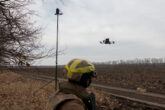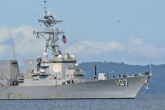December 12, 2018
The Eroding Balance of Terror
Thus far the chief purpose of our military establishment has been to win wars,” the American nuclear strategist Bernard Brodie wrote in 1946. “From now on its chief purpose must be to avert them.” Brodie’s injunction summed up the grim lesson of the first five decades of the twentieth century: after two horrific world wars and the development of nuclear weapons, it was clear that the next major conflict would produce no winners—only survivors. As U.S. President John F. Kennedy put it a decade and a half later, in the midst of the Cuban missile crisis, “Even the fruits of victory would be ashes in our mouth.” For decades, U.S. policymakers followed Brodie’s and Kennedy’s lead, putting deterrence—preventing rivals from attacking in the first place—at the center of U.S. defense strategy.
Applied effectively, deterrence discourages an adversary from pursuing an undesirable action. It works by changing the adversary’s calculation of costs, benefits, and risks. A country can, for instance, convince its opponents that an attack is so unlikely to succeed that it is not even worth the attempt: deterrence through denial. Or a country may convince its opponents that defeating it would be so costly as to be a victory in name only: deterrence through punishment. In either case, a rational adversary will decide to stay put.
Through the threat of denial or punishment, deterrence has helped keep the peace among major powers for over seven decades. Even 30 years after the end of the Cold War, it remains at the heart of U.S. defense strategy. The 2018 National Defense Strategy, for instance, begins by declaring that “the Department of Defense’s enduring mission is to provide combat-credible military forces needed to deter war and protect the security of our nation.”
Read the full article in Foreign Affairs.
More from CNAS
-
Drones: Who Is Making the New Weapons of War?
From Ukraine and Russia to Gaza and Sudan, drones have become a key weapon of war. Which companies are making them, and profiting from this rapidly expanding but controversial...
By Stacie Pettyjohn
-
Who Will Lead on Military AI, the Government or Industry?
The military is going to use artificial intelligence. But while planners in the government may have an idea of the best way forward, can they truly lead, or will industry stee...
By Josh Wallin
-
What Trump Really Wants with Venezuela
The Trump administration says it’s targeting narco-traffickers. But critics at home and abroad have decried the attacks and challenged their legal basis. Meanwhile, President ...
By Becca Wasser
-
Defense / Technology & National Security
What to Expect from Military AI in 2030As the US military races to harness artificial intelligence, experts say the biggest AI breakthroughs may not come from “killer robots” or autonomous war machines, but from al...
By Josh Wallin




